VITA Zahnfabrik
H. Rauter GmbH & Co. KG
Spitalgasse 3
79713 Bad Säckingen

Implant Prosthetic Crown Restoration with Toothlike Properties
Implant-supported restorations are firmly anchored into the bone. That is why it is important for implants to be made with restoration materials that are able to absorb chewing forces, minimizing the risk of overstressing the antagonist, the restoration and the peri-implant bone. The natural hard tooth substance is a balanced hybrid made of resistant enamel and equally elastic dentin. Dentist Dr. Mauro Fazioni and Dental Technician Andrea Lombardo explain how this natural recipe for success can be transferred to implant-supported crown restorations. In the following case, the authors used two different CAD/CAM materials for the superstructures: the hybrid ceramic VITA ENAMIC IS and the feldspar ceramic VITABLOCS TriLuxe forte (both: VITA Zahnfabrik, Bad Säckingen, Germany), in order to intelligently combine elasticity and wear resistance.
1. Patient case and material selection
A 32-year-old patient presented at the practice with two persistent primary teeth that were no longer worth preserving, as they had failed to attach to tooth 35 and 45. After a thorough consultation, the patient decided to have the deciduous teeth extracted and undergo an implant restoration. In order to reproduce the elastic dentin, the abutments were scheduled to be fabricated individually from the hybrid ceramic VITA ENAMIC IS, due to its dentin-like elasticity. The pre-integrated interface allowed for efficient CAD/CAM-supported fabrication and guaranteed a precise fit to the titanium base. Reproducing the play of colors and light, as well as the functional properties of the mineral enamel was to be achieved using crowns made of the polychrome feldspar ceramic VITABLOCS TriLuxe forte.
2. Surgery and CAD design
The two deciduous teeth were extracted under local anesthesia. After a healing period of three months, two Ankylos implants were inserted at tooth 35 and 45. After healing and exposure of the implants, scanbodies were placed and the situation was digitalized using the Omnicam. Using the inLab software (all: Dentsply Sirona, Bensheim, Germany), abutments and crowns could now be designed in line with the natural tooth structure and then produced with the CAD/CAM materials VITA ENAMIC IS and VITABLOCS TriLuxe forte. The coronal margins were not created subgingivally, in order to ensure a simple and clean adhesive cementation of the crowns under the rubber dam. Additive manufacturing was used to produce a model with integrated implant analogs to check the fit (XFAB, DWS, Vicenza, Italy).
3. CAM production of implant-retained dentures
After CAM production, manual finishing and a check of the fitting, the hybrid ceramic abutments were adhesively bonded to the titanium base. For this purpose, the adhesive surfaces of the abutment were etched with hydrofluoric acid (5%) for 60 seconds and then silanized. The adhesive surfaces of the titanium bases were blasted with 50μm aluminum oxide at 1.5bar, and a metal primer was applied. The adhesive bonding was done using an opaque composite cement. After hardening and removal of the excess, the final hardening was completed under glycerine gel, in order to prevent an oxygen inhibition layer from forming. Finally, the fissures of the CAM-fabricated and manually prepared feldspar ceramic crowns were characterized with the ceramic stains VITA AKZENT PLUS EFFECT STAINS 06 (russet) and then glazed with glaze paste.
4. Try-in, final result and conclusion
The clinical try-in showed perfectly healthy soft tissue conditions and a smooth fit of the restorations after the removal of the gingiva former, and were ready to be prepared for final seating. To achieve this, the adhesive surfaces of the abutments and crowns were etched extraorally with hydrofluoric acid and silanized. After the abutments were screwed in, a rubber dam was placed. The crown was then adhesively bonded to the abutment intraorally. The fulladhesive bond between the hybrid ceramic abutment and the feldspar ceramic crown resulted in a biomimetic unit that reproduced the tooth structure very well, both esthetically and functionally. Thanks to the chewing-force absorbing properties of the hybrid ceramic, good long-term durability is expected for this restoration. The integrated color gradient in the feldspar ceramic crowns give this monolithic restoration an esthetically convincing look.
Report 04/20
This article was initially published in the CAD/CAM International Magazine of Digital Dentistry, Italian edition no. 02/2019.

Dental Technician Andrea Lombardo Verona, Italy and
Dentist Dr. Mauro Fazioni Verona, Italy
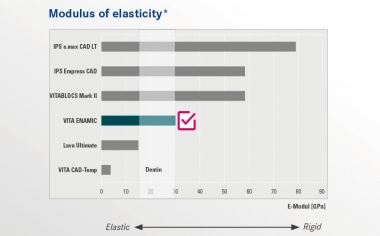
MODULUS OF ELASTICITY DENTAL MATERIALS
VITA ENAMIC is the unique global dental hybrid ceramic with a dual ceramic-polymer network structure. With an elasticity of 30GPa, VITA ENAMIC is in the same range as human dentin. Thanks to the integrated elasticity, the material provides chewingforce absorbing properties, thereby minimizing the risk of functional fatigue.
Source: Internal study VITA R&D; Berechnung der Elastizitätsmodule o. g. Materialien aus Spannungs- Dehnungs-Diagrammen von Biegefestigkeitsmessungen, report 03/12, published in Scientific documentation VITA ENAMIC, download via www.vita-enamic.com
*) Note: With an elasticity of 30 GPa, VITA ENAMIC is in the same range as human dentin. There are a wide range of references concerning the modulus of elasticity of human dentin in literature. Source: Kinney JH, Marshall SJ, Marshall GW. The mechanical properties of human dentin: a critical review and re-evaluation of the dental literature. Critical Reviews in Oral Biology & Medicine 2003; 14:13-29.
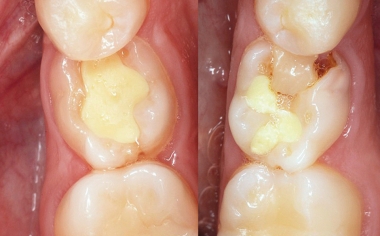
INITIAL SITUATION The initial situation with persistent primary teeth that are not worth preserving in regions 34 and 35.
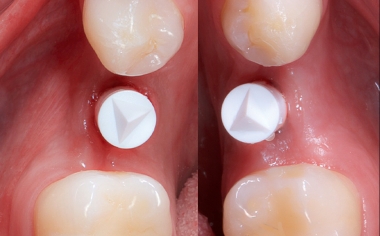
Fig. 2 After the implants healed, they were exposed and scanbodies were set up for the virtual impression.
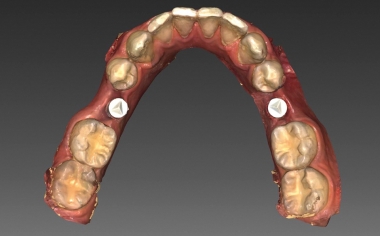
Fig. 3 The scanned intraoral situation in the lower jaw in the inLab CAD-Software.
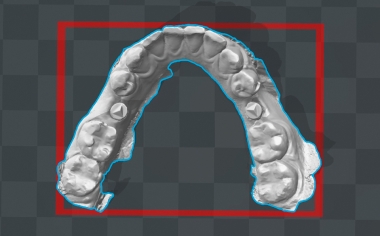
Fig. 4 The virtual model of the lower jaw was used as the basis for the production of a control model using additive manufacturing.
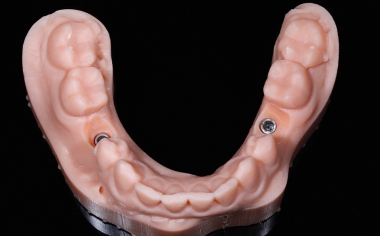
Fig. 5 The model was created using additive manufacturing with integrated implant analogs in regions 34 and 35.
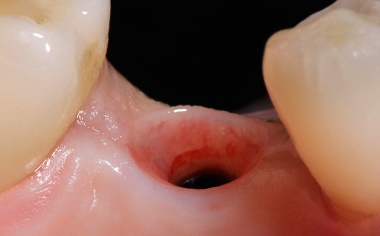
Fig. 6 The soft tissue healed until the final restoration with gingiva formers.
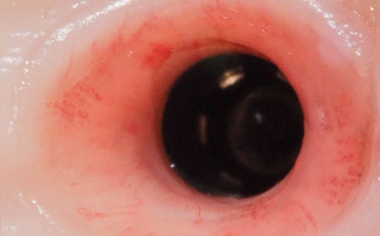
Fig. 7 The peri-implant gingiva was well formed and completely free of inflammation.
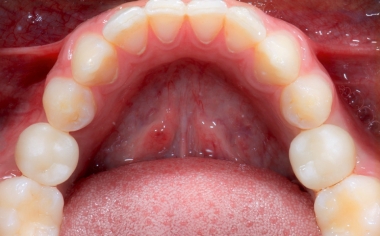
Fig. 8 During the try-in, the implant prosthetic superstructures were a tension-free fit.
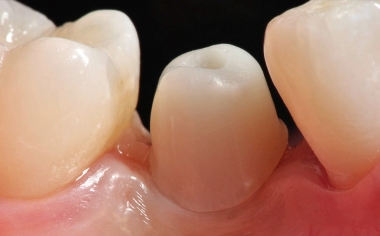
Fig. 9 The design of the crown edges could be optimized on the hybrid ceramic.
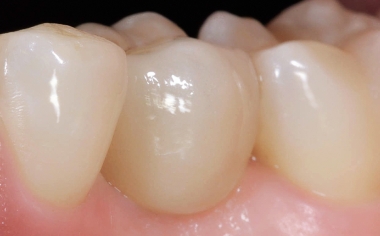
Fig. 10 The situation in region 34 immediately after fulladhesive seating of the feldspar ceramic crown made of VITABLOCS TriLuxe forte.
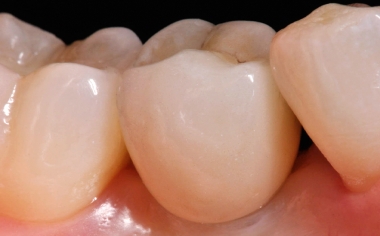
Fig. 11 The feldspar ceramic crown on 35 looked completely natural.
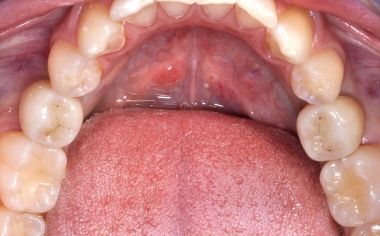
RESULT Both implant-supported prosthetic restorations integrate harmoniously into the natural dental arch.